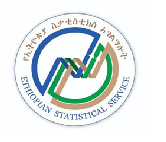The Ethiopian Statistical Service is in the process of finding and using big data to make better statistics. Big data are large and complex amounts of data that can come from various sources, such as transactions in shops, cell phones, modern cars or cell phones.

Big data can be viewed as a complement to traditional data sources, offering additional insights and opportunities for analysis beyond what traditional data sources provide. Here’s how big data complements traditional data sources:
Expanded Data Universe: Big data expands the data universe by incorporating new sources of data that were previously unavailable or underutilized. This includes data from social media, sensors, mobile devices, web logs, and other sources that generate vast volumes of data at high velocity.
Richer and More Diverse Data: Big data encompasses diverse types of data, including structured, semi-structured, and unstructured data. This richness and diversity of data provide organizations with a more comprehensive understanding of their customers, markets, and operations.
Real-time and Near-real-time Insights: Big data analytics enables organizations to analyze data in real-time or near-real-time, allowing for faster decision-making and response to changing conditions. This complements traditional data sources, which may provide historical or batched data but lack the immediacy of real-time insights.
Detailed Analysis: Big data analytics can perform detailed analysis of data at a level that may not be feasible with traditional data sources alone. This enables organizations to uncover hidden patterns, trends, and correlations that may not be apparent from aggregated or summary data.
Scalability and Flexibility: Big data platforms and technologies are designed to handle large volumes of data and scale horizontally to accommodate growing data volumes. This scalability and flexibility complement traditional data sources by providing the infrastructure needed to process and analyze increasingly large and complex datasets.
Enhanced Predictive and Prescriptive Analytics: By incorporating big data into their analytics initiatives, organizations can enhance their predictive and prescriptive analytics capabilities. Big data analytics can identify predictive signals, detect anomalies, and recommend actions based on real-time insights, complementing traditional predictive modelling approaches.
Holistic View of the Business: Big data enables organizations to gain a more holistic view of their business by integrating data from multiple sources and analyzing it in conjunction with traditional data sources. This comprehensive perspective allows organizations to make more informed decisions and drive innovation.
Big data serves as a powerful complement to traditional data sources, offering new insights, capabilities, and opportunities for organizations to extract value from their data and drive competitive advantage in today’s data-driven world.

